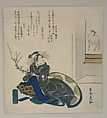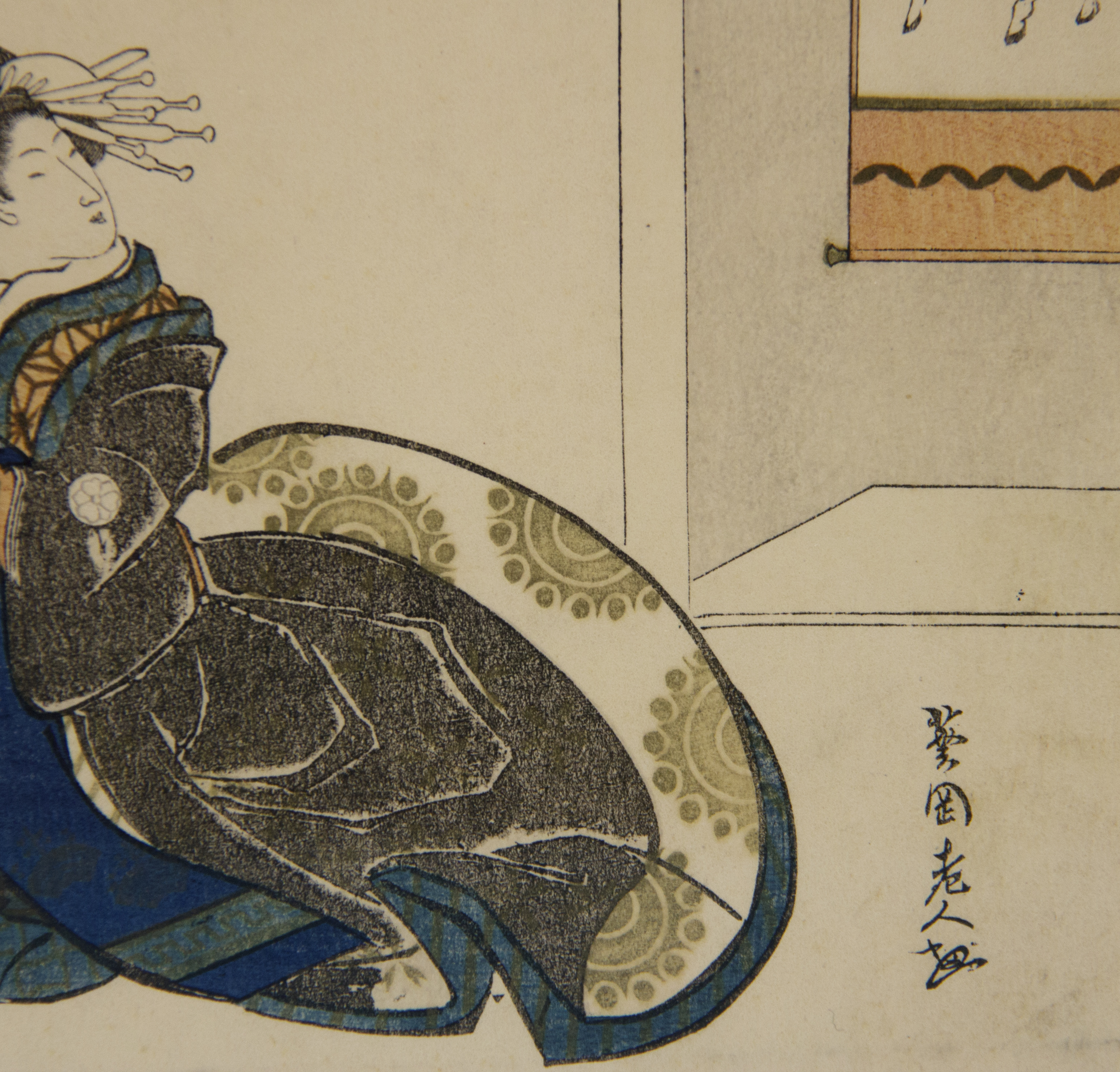Courtesan with Branch of Plum Blossoms
Totoya Hokkei Japanese
Not on view
A high-ranking courtesan is shown preparing a flower arrangement from a bough of cherry blossoms, a symbol of the arrival of New Year and spring in the lunar calendar. She gazes back to admire a hanging scroll painting of a goat in the alcove, indicating that his surimono (privately published woodblock print) was created to celebrate spring of the year of the goat—1835 in this case. The obi sash, embossed with a fan emblem of the poetry group that printed this, appears to be printed in Prussian blue, a pigment that was used extensively in woodblock prints from around 1829 onwards.
Three kyōka (31-syllable witty verse) on vernal themes accompany the image. The poem on the left, the position of honor, is by the kyōka master Yayoian Hinamaru II.
The print is signed “Aoigaoka rōjin,” or “Old Man Aoigaoka.” Though at first we thought that this might refer to Aoigaoka Keisai, a pupil of Totoya Hokkei, who also used this name, research shows that this must refer to the master not the pupil. Hokkei’s gō (style name) was Aoigaoka, and in 1836 used this signature on another print, Furthermore, his gravestone is engraved with his name as “Aoigaoka Rōjin Hokkei kun no haka” (The Tomb of Master Hokkei, Old Man Aoigaoka).
This image cannot be enlarged, viewed at full screen, or downloaded.
This artwork is meant to be viewed from right to left. Scroll left to view more.




